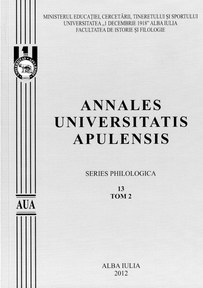Les mutations socio-spatiales dans un village de Transylvanie méridionale, face à la perennité des traditions: conflits ou adaptations?
Socio-Spatial Mutations in a South Transylvanian Village Facing the Perenity of Traditions: Conflicts or Adjustments?
Author(s): JEAN-MICHEL LEMONNIERSubject(s): Cultural history
Published by: Universitatea »1 Decembrie 1918« Alba Iulia
Keywords: Transylvanian village; socio-spatial changes; Romanian rural area; post-modernity; tradition
Summary/Abstract: Through the significant example of a village called Cărpiniş, located in the Southern Carpathians, this article aims to show the existence of a social , spatial and cultural opposition in search of a complementary way to organize the space linked to a “traditional mentality” or that could be considered as such, and facilities at odds with this vision, according to the views of the “farmer villager”. A “farmer villager” who sees himself as a “native” in comparison with the others that is to say the “foreigners”. We emphasize the concept of a“hybrid village” to describe the changes that have been taking place in this village of the Transylvanian countryside for decades. We are going to argue that these social and spacial upheavals are related to the emergence of new lifestyles, new ways of grasping space and time. Our work is necessarily part of a multiscalar logic. Once the issues of our study described, we will present the situation of the village of Cărpiniş part of the Romanian space. Then we will focus on the rather singular socio-spatial setting, of this village compared to other Romanian villages: a village held between the “checkerboard” and the “village street”. So it is, may be through a “green space” community, named “Poiana”, a unifying axis of socio-spatial practices of the village, that lies the originality of this village “in the shadow of the southern Carpathians”. We will see through the questioning of this community nature of 'Poiana' by liberal land policy, and in fact by the arrival of new residents in door-to-fake, in most cases with the “values” of this rural area, that it’s a great part of the “closed" village solidarity which tends to disappear gradually. We will have previously issued a definition of what is a “village” in Romania, then by changing our scaling analysis we will focus on a different spatial and social unit called “gospodarie” or “Maisnie”. Then we will look into the way the older villagers designed their house. A design related as much to economic imperatives as to a fulfillment of a “cosmic order” linked to a “primordial tradition”. Before, it seems of the utmost importance to mention the life of a “farmer-villager” of Transylvania from 1945 to 2012. The analysis of the career of this native and his fellows shows what seems to us to be a struggle to preserve his identity and a particular conception of time and spacethat we will qualify as “mythical and traditional”. This relationship to the world of the “farmer villager” is in opposition to postmodernity which forces quickly and rather radically a new socio-spatial and moral order to the Transylvanian village. Nevertheless, we will see that in many respects, the village retains some “mythical, "transhistorical"aspects”, We will therefore insist on the fact that these changes are not only “material”, but also symbolical. It is the mental space of the farmer villager which is upset here, and brings about the formation of an
Journal: Annales Universitatis Apulensis. Series Philologica
- Issue Year: 13/2012
- Issue No: 2
- Page Range: 279-296
- Page Count: 17
- Language: French

